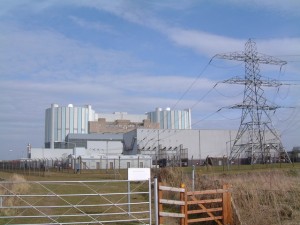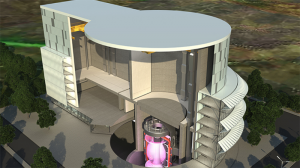The world’s first full-scale ‘fusion’ power plant could be built on Bristol’s doorstep under an ambitious plan backed by the city’s business leaders.
The plant, which would harness the game-changing new form of clean power generation, could create thousands of jobs while also helping to tackle climate change, according to its supporters. 
Fusion technology recreates a reaction similar to that which takes place in the sun, fusing atoms together rather than splitting them.
It requires very little fuel to release huge amounts of energy and produces only small amounts of waste with no carbon emissions.
The bid to build the world’s first full-scale plant of its kind near Bristol is being prepared for submission to the UK Atomic Energy Authority (UKAEA) under the banner of the Western Gateway, the partnership of local authorities that stretches from Swindon via Bristol to Swansea.
If the bid is successful the plant – along with associated businesses, training and technical facilities – would be developed at the decommissioned nuclear power stations at Oldbury-on-Severn, north of Bristol on the banks of the River Severn, pictured, and at Berkeley in Gloucestershire.
The plant would be expected to be operational by 2040, with much of the supporting ‘eco-system’ in place by then.
The bid has the backing of the West of England Combined Authority, which takes in Bristol City Council, the West of England Local Enterprise Partnership (LEP), and Business West, the region’s largest business group which also runs Bristol Chamber of Commerce.
Other backers include South Gloucestershire Council, Gloucestershire County Council, Stroud District Council, GFirst LEP; Nuclear South West, South Gloucestershire and Stroud College and Bristol University’s South West Nuclear Hub.
Andy Bates, bid co-ordinator at Business West, said: “This will be a multi-billion pound investment creating thousands of jobs both in the plant and related services and industries.
“It is exactly the sort of project we need to help tackle challenges and inequalities across the region that have broadened and deepened as a result of the tough economic climate.
“We have abundant land already identified in national and local policy as suitable for power generation development.”
He said the plant’s locations were surrounded by a hotbed of expertise in hi-tech digital, materials and manufacturing industries and was also close to the Culham Centre for Fusion Energy in Oxfordshire.
“The region has always been at the forefront of innovation in power generation, and we have modern construction know-how, a skilled workforce and first-class education and training institutes,” he added.
“There is also a groundswell of political and community support. It is a perfect fit.”
Following the nomination of sites, the UKAEA will go through a selection process resulting in a shortlist of three for submission to the Business Energy and Industrial Strategy Secretary.
The final selection is expected to take place around the end of next year.
Oldbury nuclear power station opened in 1967 with two Magnox reactors producing 424 megawatts – enough to power two cities the size of Bristol. By the time it was decommissioned in 2012 it was the world’s oldest operating nuclear power plant.
Nuclear generation at the smaller Berkeley power station, which is further north on the banks of the Severn, started in 1962 and lasted until 1989, when the second of its two Magnox reactors was closed.






























